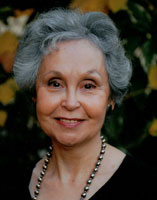
Horus courtesy of wikipedia.org
My high school math teacher, Mr. Crawford, taught me a great lesson in life. I don’t remember much about the right angles of an isosceles triangle, but I do remember his adage: Your freedom stops where somebody’s chin begins. Personal freedom isn’t absolute. If I am to have it, I must respect the freedom of others. That respect generates diversity and enriches our lives. Resist diversity and inbreeding follows, a state nature abhors.
Humans tend to encourage conformity and sameness, despite nature’s heeding. Religion is remarkable for its ability to resist change. The devout would rather fight “holy” wars than alter their precepts. Consider the number of bloody clashes throughout human history.
Aware that dogma is the antithesis of democracy, our founding fathers wrote the Establishment Clause and inserted it into the First Amendment of the U. S. Constitution. They intended to create a wall between church and state.
Supreme Court Justice Samuel Alito disagrees with their purpose, employing sophistry to convince us the founders meant otherwise. He frets about religious freedom as if the country was meant to be a theocracy and blames those who are without faith for its neglect. It is hard to convince people that religious liberty is worth defending if they don’t think that religion is a good thing that deserves protection. (FreeThought Today, September 2022, pg. 7.)
Though it favors none, the Frist Amendment does respect an individual’s right to have a religion. That, however, is a far cry from advocating for one. What’s more, the judge’s claim that heathens, like me, threaten religious freedom is the stuff of bad dreams. If history serves as evidence, non-believers have suffered much at the hands of zealots and not the reverse.
Alito’s language is coercive in that it casts non-believers as evil-doers. I would argue that one man’s decision not to pray in no way impedes the rights of the multitude who do. When he insists the way to protect religious freedom is the teach non-believers to care, Alito opens the door to the forced conversions we’ve seen in the past.
As an atheist, I am indifferent to the means people employ to satisfy the question, “Why does the universe exist?” Much of the argument strikes me as sound and fury. Despite the many holy wars that have been fought, global religions appear to have sprung from a common root. As far back as ancient Egypt, tablets tell the story of Horus, a god born of a virgin on December 25, who died and was resurrected after 3 days. Religious apologists resist the comparison. Nonetheless, Egypt’s god casts a long shadow that speaks of a common origin.
Today’s conservative high court seems blind to the common precepts of many faiths. Instead, they behave as if Christianity was the one true belief and seem intent on tearing down the wall between church and state. I doubt their notion of religious freedom would create a more tolerant and perfect union.
I fear that once they have cleared away the rubble of the Establishment Clause, they would dedicate themselves to codifying Christian dogma into civil law. Doubtless, members of the religious right stand ready to cheer them on.
That concern brings me back to my math teacher’s stricture, wisdom to which I’ve added over time. The limitation he identified I’ve come to see as a form of liberation–which is good because directing other people’s lives is beyond my capability. I spend much of my time watching my feet to keep from falling.
Boundaries like age, a chin, or a wall are crucial to the landscape. Not only do they mark perimeters but they also identify the open spaces where I have a right to be free.
